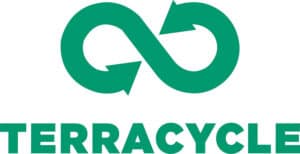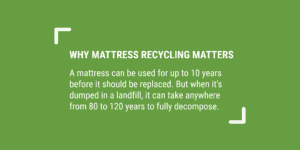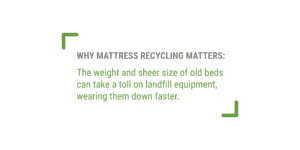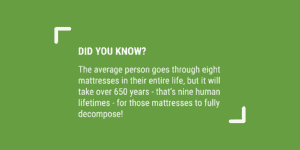Since 2014, we’ve donated $1150 to the Wildlife Rescue Association. Our latest donation to them was in August 2019.
In 2020, we have donated $500 to this charity.
Since 2014, we’ve donated $1150 to the Wildlife Rescue Association. Our latest donation to them was in August 2019.
In 2020, we have donated $500 to this charity.
Ocean Legacy is one of our favourite charities to support. The work they do cleaning up shorelines here in BC and globally makes such a positive impact. That’s why we were happy to be able to donate another $500 to them in May 2021, bringing our total donations to them since 2016 to $1,400.
Mission, BC houses SAINTS (Senior Animals In Need Today Society), an end-of-life sanctuary for senior and special needs animals. Since 2004, the organization has supported all kinds of animals that come into their care. Providing a permanent home to elderly companion animals ensure they receive the love and care they so rightly deserve. Medical treatments are also available for animals at SAINTS.
Since 2016, Canadian Mattress Recycling has donated many pet beds to the sanctuary. We have also donated $500 to help with the medical and housing needs of these animals. The cushions that we donate are in good condition, salvaged from old furniture we recycle.
In 2020, we have donated $500 to this charity.

Every year, SAINTS raises funds for medical bills. In 2017 alone, vet bills total $205,000. Most of the resident animals arrive at the sanctuary with huge vet bills. By fundraising and running a sponsorship program, SAINTS can continue providing care for these animals. Last year, SAINTS ran a fundraiser called “the Amazing Raise” where groups raised funds for specific species of animals, from dogs to horses, to cats and bunnies. The Amazing Race occurs annually, so be sure to stay up to date for the next time it’s around!
The medical care and attention new arrivals need can be pricy. The average monthly vet bill is $10,000. Therefore, the organization has opened a sponsorship program to allow people to sponsor an animal of their choice. Dogs, cats, rabbits, and barnyard animals are all open to sponsorship. Sponsorship is a fantastic way to provide care and love towards an animal – especially if you can’t foster or adopt one.

Website: http://www.saintsrescue.ca/
Twitter: @SAINTSrescue
Facebook: @SAINTSrescue

This blog post is brought to you by Canadian Mattress Recycling, Metro Vancouver’s mattress recycler.
Kickstarter – we all know about the platform, and can probably think of one or two projects successfully funded through it. But can you say the same thing about sustainable Kickstarter projects, or projects on Kickstarters that do good for the environment? Here’s our round up of Kickstarter projects we found interesting!
Created by former Dyson experts, this Kickstarter Project claims that the vacuum will be the best performing cordless vacuum in the world, complete with its own patented technology. It does more with less, and outperforms existing cordless vacuums.

With a 60 minute run-time between charges, it’s packed with more than enough power for a small and larger living space. The vacuum’s 3-in-1 mode also has an additional benefit: the vacuum won’t be too heavy to lift. It’s a difference between 5lbs for current vacuums, and 1 lbs for the Lupe. Not to mention, we really like the stylish and modern black and white design.
A stylish, technical jacket, this is one of the Kickstarter projects that caught our eye. Every jacket is bold and bright, and so is its environmental commitment. The jacket is made of 30 recycled plastic bottles. Right now there are 154 backers for the project, pledging close to $25,000.
But what makes the Urban Jacket an Urban Jacket?

For starters, the creators behind the Kickstarter designed the jacket to fit with a bike helmet, perfect for keeping one cool and dry in the rain. It’s lightweight, windproof, and waterproof. Also, it has a reflective mode perfect for riding a bike at night, or in imperfect conditions. Another cool feature is that the jacket is breathable – and comes with ‘pit zips’, which help ventilate odors and sweat from your armpits. We think this would be really helpful in rainier cities such as Vancouver, also for cities like Surrey where people rely on public transit more.
Check out the project here.
Next up, FYTA Beam, the Smart Plant Sensor! If you’re just like us, and struggle with keeping plants alive at home, this sensor and app will take the guesswork out of gardening!

Designed to be used for indoor plants, this sensor tracks multiple important variables for plant health. Then, it notifies you through the app when you need to water the plant, or give it more sunlight. It also helps you identify your plants through a simple quiz through the app so that even beginner gardeners can take care of their plants.
This is definitely another product on our to-watch-for list! This fantastic swimwear, made in Italy, boasts a plant-based fabric called Yulex.
Here are its highlights:
Learn more about this project here.

We all find ourselves at messy workstations from time to time, whether the culprit is an overstuffed drawer of paper, a tangled mess of wires and cables, or pens and office supplies in abundance. Sometimes, our workspaces can become quite overwhelming and it can be tricky to determine where to begin the decluttering process. A good angle to approach the daunting task of getting organized is to begin with a list.
Here is a breakdown of ways you can make your workspace more organized, accessible, and ready for action.
Sometimes, cables and wires can get quite out of hand. Have you ever had that experience of finding a cable and not remembering what it is for? Or maybe the tangled mess of cables takes up too much space in your desk.

Use elastic bands and masking tape to separate your cables and label them.
An easy way to combat these problems in a short amount of time involves two relatively inexpensive office supplies which you may be lucky enough to already have in your cluttered workspace: masking tape and elastic bands.
Use three fingers as a guide to wrap your cables and wires into loops, then use an elastic band to hold those loops together. The finishing touch involves the masking tape. Wrap the masking tape around one end of the wire and leave enough excess material to fold it over and make a tag. Now you can label your wires and store them in a tidy fashion.
This task takes puts another common office supply to good use—sticky notes. Sticky notes are very useful for their obvious applications such as writing reminders and marking book pages, but they can also be used to organize loose paperwork.
If you can find a designated spot on or in your desk, use the sticky notes to tab the piles. Use categories such as personal, work, taxes, other, and to sort.

Using sticky notes doesn’t have to mean clutter on your desk – you can organize your notes into categories and pile them on your desk.
By keeping a to sort category, you can get to some of that paperwork later and maintain organization by dedicating 15 minutes at the beginning or end of each week to make sure that stack is dealt with.
The endorphins released by accomplishing this simple task will not only aid in habit-forming but also provide you with a sense of accomplishment each time.
Every once in a while, the big clean happens. There are pencils, pens, markers, and highlighters everywhere. Which ones are new and which ones are old and dried out? When you go to test your writing tools to see if they are still useful, there is an instinct to throw out anything that can no longer write.
This is the easy answer, but did you know there is a more sustainable answer?

Chain department stores such as Staples provide bins where you can deposit old pens and more for recycling.
Many office supply locations offer recycling programs. Chains such as Staples provide bins at their locations where you can deposit old pens, highlighters, and even trickier items such as printer ink cartridges. If you are unsure if your local office supply store offers these services, check their website. It just takes a few easy clicks to see what exactly, Staples’ TerraCycle program accepts.
Now that your desk is decluttered, find a way to keep it organized. Sometimes you may need to discover multi-functionality in other household items. Useful desk organizers can be found in items such as old mugs that are collecting dust in the cupboard, as well as a desk drawer essential: cutlery trays.

Organizing your office drawers can be as easy as using kitchen cutlery trays for sorting.
These organizers do not need to be a ‘kitchen only” tool. In fact, many models have compartments in a variety of sizes. These can provide space for rulers, writing utensils, business cards, staples, and thumbtacks. If you can pair these repurposed tools with the above tips and tricks, there is no workspace you cannot conquer.
Happy decluttering!
Canadian Mattress Recycing Inc. is Metro Vancouver’s leading mattress recycler. Since opening our doors eight years ago, we have recycled over 25 million lbs of mattresses and upholstered furniture. We dismantle, recycle, and reuse 100% of all items we receive. We are proud environmental leaders, paving the way for a more sustainable, climate-smart future.
[lwptoc]
Getting rid of appliances appropriately can be a massive headache. They can be too heavy to carry or fit into a car. But when your washing machine breaks down, how do you get rid of it responsibly?
Here are six ways to dispose appliances in Vancouver:
The best hands-off way to dispose of an old washing machine or stove is to hire a junk removal service to pick it up for you. Some services will landfill the appliance. Others will recycle it.
Alternatively, you can always find the nearest recycling depot to take your old appliances.
Here’s some recycling resources to get you started:
Check out the City of Vancouver recycling page. Appliances can be difficult to recycle or dispose of, but the Waste Wizard exists to help you find out what goes where.
Regional Recycling takes residential appliances such as fridges and stoves. Bring your old appliances to a Regional Recycling location.
The ElectroRecycle program accepts small appliances, power tools, and even exercise machines for recycling. With over 200 collection sites across BC, you can easily find somewhere to drop off your old appliances.
Finally, the Recycling Council of British Columbia has a Recycling Hotline that you can call to inquire about how to recycle specific appliances. They can also answer questions. You could also find depots that accept specific appliances through their website.
If these resources still draw a blank for you, we suggest asking a neighbour or strata.
They can recommend you a solution for your appliance disposal needs. They may also let you know about upcoming events to help you dispose of the items.
Some stratas will hire a big bin several times a year for its residents to dispose of appliances and large furniture, free of cost. You never know what is available through your strata unless you ask!
Check your recycling options in your city. You may be able to recycle old appliances at a local retailer, such as a Best Buy, London Drugs, or Staples. Give the stores a call, or visit their website for more information.
Did you know: London Drugs will take back appliances purchased from their store, such as toasters, coffee makers, and other electronics.
Test your luck by selling your old appliance online. Fix it, give it a polish, and you never know who may be interested in buying it! Sites like kajiji, craiglist, Facebook marketplace, and used.ca can be great sites to post your item.
Many residents don’t know cities are often the best resource! Visit your city’s waste disposal department website or give them a call. Many of their staff are educated, and can help you find a place to dispose of your old appliances.
Not sure where to start your research? We’ve put together a list of Metro Vancouver junk removal businesses. Note that listing these companies do not mean we endorse them. Please do your research to see if they are the right fit for your needs.
Just Junk is a local company that removes appliances if you live in Vancouver and the Lower Mainland. They take dishwashers, toasters, fridges, and more. When you book with them, they charge based on volume depending on how much space your items take up in their trucks.
Another junk removal company that takes appliances is Ronald’s Rubbish. They have a crew of insured and uniformed laborers, and they offer same day service.
They are based in Vancouver and the Lower Mainland, so contact them to see how much it costs to remove your appliance.
Another company you can check out to remove appliances is Russell’s Rubbish Removal. They have been around since 1997 and serve White Rock, South Surrey, Surrey and Langley areas. They take electronics too, so be sure to check out their site.
Finally, another company you can check out is Junk Removal Express. They can remove appliances and also larger items like hot tubs and other items that are difficult to discard. They service Surrey BC but you can still give them a call or check their website if they serve Vancouver.
Yes, we’re going to mention our own company. In addition to the mattresses we take, like our name suggests, we also do residential pickups for any appliance other than fridges. Give our office a call during our hours to inquire what appliances we accept for recycling.
This blog post is written to help Metro Vancouver residents dispose of their old appliances responsibly. Together we can reduce illegal dumping in our streets, and find a sustainable disposal method to get rid of old washing machines, fridges, and more.
Canadian Mattress Recycling is Metro Vancouver’s leading mattress recycler. Our recycling facility accepts appliances (except for fridges). Check our recycling rates and visit our facility today!
Recently, Canadian Mattress Recycling Inc. donated $250 to the Canadian Honey Council in support of their research to save the bees.
Bees act as important pollinators for crops and fruits. A third of all the food we consume relies on the pollination by these honeybees. From crops to fruit, bees help keep our food production alive. In British Columbia alone, honeybees contribute around $470 million to the British Columbian economy!
While we researched about honeybees for this article, we also discovered some interesting facts about bees and beekeeping in British Columbia. In the province alone, there are over 500 beekeepers, with more enrolled in professional commercial beekeeping programs. Beekeeping in BC oversees over 25,000 colonies of honeybees. According to the BC Honey Producer’s Association, beekeeping is a crucial practice, and industry, that supports a variety of crops and fruits in the country.
The Canadian Honey Council is in charge of labelling, grading, and marketing honey nationally. The CHC also provides research funding to support studies for bee health. Honeybee populations have been falling across the world – and the CHC’s research funding helps study, and protect, these important pollinators.
Follow them on Facebook and Twitter.
Canadian Mattress Recycling Inc. is proud to donate $250 towards the Canadian Honey Council’s Canadian Bee Research Fund. We are a locally owned BC business dedicated to environmental preservation. We have recycled over 25 million lbs of mattresses and furniture, and supported over 90 organizations and charities seeking to make the world a better place. We believe in supporting the communities that support us.
We donated $400.
When someone mentions a Greyhound, what often comes to mind is the image of a lean, long-legged dog with a slender face. But when pressed further, what else do you know about the breed?
 What do you know about Greyhounds? (Image Credit: NCGL)
What do you know about Greyhounds? (Image Credit: NCGL)
When we sat down with NCGL, we learned that:
A unique breed of dogs, Greyhounds boast sharp eyesight and speed capable of hunting agile prey. Other sighthounds include whippets, salukis, and afghan greyhounds. Compared to scent-hounds, these sighthounds – as their name suggests – excel at hunting by sight rather than by scent.
 Greyhounds excel at hunting by sight. (Image Credit: NCGL)
Greyhounds excel at hunting by sight. (Image Credit: NCGL)
Whereas a beagle may sniff out game hidden in brush with their powerful nose, Greyhounds would use their excellent eyesight to spot deer and hare, and chase after them. Where a Greyhound would lack in endurance during a chase, they excel with bursts of speed.
The ability of these Greyhounds to sprint make them the ideal racing dogs. As such, many bets have been made on the racefield for these Greyhounds. In fact, Greyhounds often find themselves in the racing career, trained to compete against each other under the caring guidance of their handlers. With their natural ability to reach 72 km / hr during sprints, Greyhounds have long thrived on the track.

Greyhounds have the natural ability to reach top speeds for racing. (Image Credit: Canadian Mattress Recycling)
But did you know that Greyhounds are also fantastic apartment dogs?
To those unfamiliar with the Greyhound breed, recommending the breed to apartment dwellers may seem odd. Greyhounds love to sprint, to race. So isn’t an apartment the last place they’d feel comfortable living in?
On the contrary, as we learned from NCGL, Greyhounds find contentment lounging at home, sprawled on a couch. When we met Judy Miller, NCGL’s Treasurer/Director, her own Greyhound was curled up under her office desk, dozing off in a light nap!
Greyhounds require only a couple of short walks each day. They like to sleep a lot during the day, making them a very low maintenance companion compared to other breeds. In addition, Greyhounds rarely bark, and are great with other people and animals.
Some dog breeds are infamous for nipping at outstretched fingers. This is a problem when you have infants or toddlers, who love to grab things. But the sweet, gentle nature of Greyhounds make them the perfect addition to a new family. Their calm temperament would be a wonderful contrast to a new family’s busy life.

The Greyhounds’ sweet and gentle nature make them perfect companions. (Image Credit: Canadian Mattress Recycling)
The key takeaway is to teach children not to bother a Greyhound’s nap – or to surprise a Greyhound with sudden movement if they’re lying down or sleeping. These general pointers apply to other breeds, though, and aren’t Greyhound exclusive.
Overall, Greyhounds make fantastic family pets. Even though they’re a larger dog breed, and can seem intimidating around children compared to smaller dogs, the Greyhounds’ sweet and gentle nature can make them perfect companions.
In Vancouver, the Greyhound community is filled with passionate owners and advocates willing to lend a hand if you decide to adopt a Greyhound. For example, when we spoke with NCGL and attended their fundraising gala, it was clear that the owners all had the breed’s best intention in mind. Many of them attend local activities and meet-ups, with most of them Greyhound-friendly!
 The Greyhound community is filled with passionate owners willing to lend a hand with your own adopted Greyhound. (Image credit: NCGL)
The Greyhound community is filled with passionate owners willing to lend a hand with your own adopted Greyhound. (Image credit: NCGL)
Sometimes people feel adopting a dog may be stressful, or scary, seeing as they may not have the experience re-training them or helping them transition into their new home. However, with the presence of NCGL and its members, you know someone is always there to help if you ever need it.
One of the biggest draws of adopting a Greyhound is that as ex-racing dogs, they’re already house-trained. Of course, there will always be an adjustment period for the dog to get adjusted to its new home in your house, but often these dogs are well trained and extremely well mannered.
Some of the other Greyhounds NCGL rehomes may require more training, such as puppies. For example, earlier in 2019, a litter of pups were rehomed from Northern Alberta along with 15 other adult dogs including the mom of the puppies.

Puppies will need more training compared to adult dogs. (Image Credit: NCGL)
Because these pups haven’t been trained as racing dogs, the new owner must be dedicated to training them from a blank slate, just like a puppy from any other breed. Even so, as we’ve found, the community at NCGL is always eager eager to share tips for training and taking care of a Greyhound!
If you’re located in Western Canada – you’re in luck!
Northwest Canadian Greyhound League (NCGL) oversees the fostering and adoption of retired racing Greyhounds in Northwest Canada. For the last twenty years, NCGL has placed many retired racing Greyhounds in their new, permanent homes.
 Vancouverites can adopt a Greyhound through NCGL. (Image credit: NCGL).
Vancouverites can adopt a Greyhound through NCGL. (Image credit: NCGL).
Advocating on behalf of these gentle dogs, NCGL established a network with Greyhound adoption organizations in the states. Thus, NCGL works across borders to ensure the Greyhounds in their care receive the best quality of life after their racing days. Their chapters spans British Columbia, Alberta, Saskatchewan and Washington State.
Visit their website to learn more about the organization, the breed, and the adoption process. To see the Greyhounds available for adoption, go here. If you have questions about the adoption process, email Ms. Judy Miller at treasurer@ncgl.ca.
As more Canadians choose to adopt a dog these days, it is important to make sure the breed you adopt suits the lifestyle you live. For apartment dwellers, many would start looking for a smaller dog. However, as we learned, Greyhounds suit the apartment lifestyle despite their size. Their easy going temperament, need for a few short walks a day, and penchant to curl up on your couch to sleep the day away, make them a fantastic companion.
Canadian Mattress Recycling Inc. is pleased to feature Northwest Canadian Greyhound League in its first quarterly charity feature. At our company, we firmly believe in supporting organizations seeking to improve the environment, animals, and communities around us. We are also grateful to have attended the NCGL’s For the Love of Dogs fundraiser gala early in the year, learning about the amazing work the organization does for the Greyhound breed.
Canadians landfill about six million mattresses each year across the country. Some provinces support mattress recycling programs. But not all of them do. And even within the provinces that have mattress recycling programs, services can be limited by regions and cities.
In British Columbia, Alberta, and Manitoba, private recyclers have set up shop to take residents’ mattresses off their hands. In Metro Vancouver, Canadian Mattress Recycling services over 10 municipalities, and their facility is open seven days a week to process items for recycling.
The truth is, most mattresses are still being dumped at landfills. Landfills are in charge of their own recycling programs, often diverting recyclable mattresses to private facilities for dismantling.
In the provinces (and cities) with mattress recycling programs, recyclers dismantle old beds and box springs. They take apart the beds layer by layer, sorting the materials for processing. Often, they work with foam, polyester, metal, and wood. The result from their efforts leads to a success rate of 95% to 100% of materials they recycle – these businesses can recycle up to 100% of the bed you sleep in!
But you may be wondering, why is mattress recycling important?
Landfills find disposing mattresses and old beds a challenge. Compared to other garbage, mattresses occupy 400% more space. Sometimes, too many mattresses dumped in landfills can cause overcapacity issues. Landfills then have to reject items or increase their space. However, it’s difficult for a landfill to expand these days due to environmental regulations. Therefore, landfills deal with mattresses by seeking out other businesses that can take them.

For example, in Metro Vancouver, Canadian Mattress Recycling provides recycling services for several municipalities. Landfills receive mattresses from residents and separate clean ones from dirty. Then, they ship the clean ones to our facility for recycling.
If you’ve ever tried lifting a mattress, you’ll find they’re usually pretty heavy. This weight poses a problem for landfill sites because the sheer weight and size can wear down equipment faster. Repairing these equipment can be costly for landfills, especially since they have other items to process. In comparison, recycling facilities that take mattresses are often equipped with specific tools to make mattress recycling easier and effective. Specialized equipment, tools, and processes all make mattress recycling possible.

A mattress kept in good condition lasts for a decade, sometimes even longer. So what does this mean when you dump one in a landfill? Mattresses dumped in landfills can take anywhere from 80 to 120 years before the mattress is fully decomposed. Now, consider how many mattresses a person uses in their entire lifetime, and you can start to picture why we need mattress recycling.
Mattresses decomposing in landfills slowly release toxic chemicals. Manufactures treat some portions of mattresses with chemicals when they’re made. Foam and fabric can also contain chemical elements. When these materials decompose, they react to natural elements such as wind and rain. Exposed metal springs from bed frames can corrode. A toxic sludge builds up in the landfill’s soil. Then the next time it rains, this sludge seeps into the ground and runs off the site. Eventually, the chemicals from your bed end up in water systems, polluting the environment.

One reason that recycling is popular is because it recovers valuable materials for reuse. People may think recycled materials are flimsy, but that’s not always the case. When we talk about mattresses, think about the materials used to make them. Manufacturers often build mattresses out of expensive and high-quality materials so they last as long as they do. Therefore, it’s a shame to throw all that material away! A mattress recycler can often divert 95% to 100% of a mattress’s material. Coir, foam, metal, and fabric can be sent to secondary markets to be made into new products.
Mattresses can be difficult to recycle – but there are recyclers across Canada that are taking up the cause of reducing the number of mattresses that end up in landfills. If you’ve ever wondered why people even bother to recycle a mattress, simply consider how long it will take a mattress to decompose. Often, you’re looking at 80 to 120 years. Landfilling a mattress impacts everyone – from landfill sites to their operators, to residents and natural habitats. So if you can, recycle your mattress. It’s the right thing to do.
